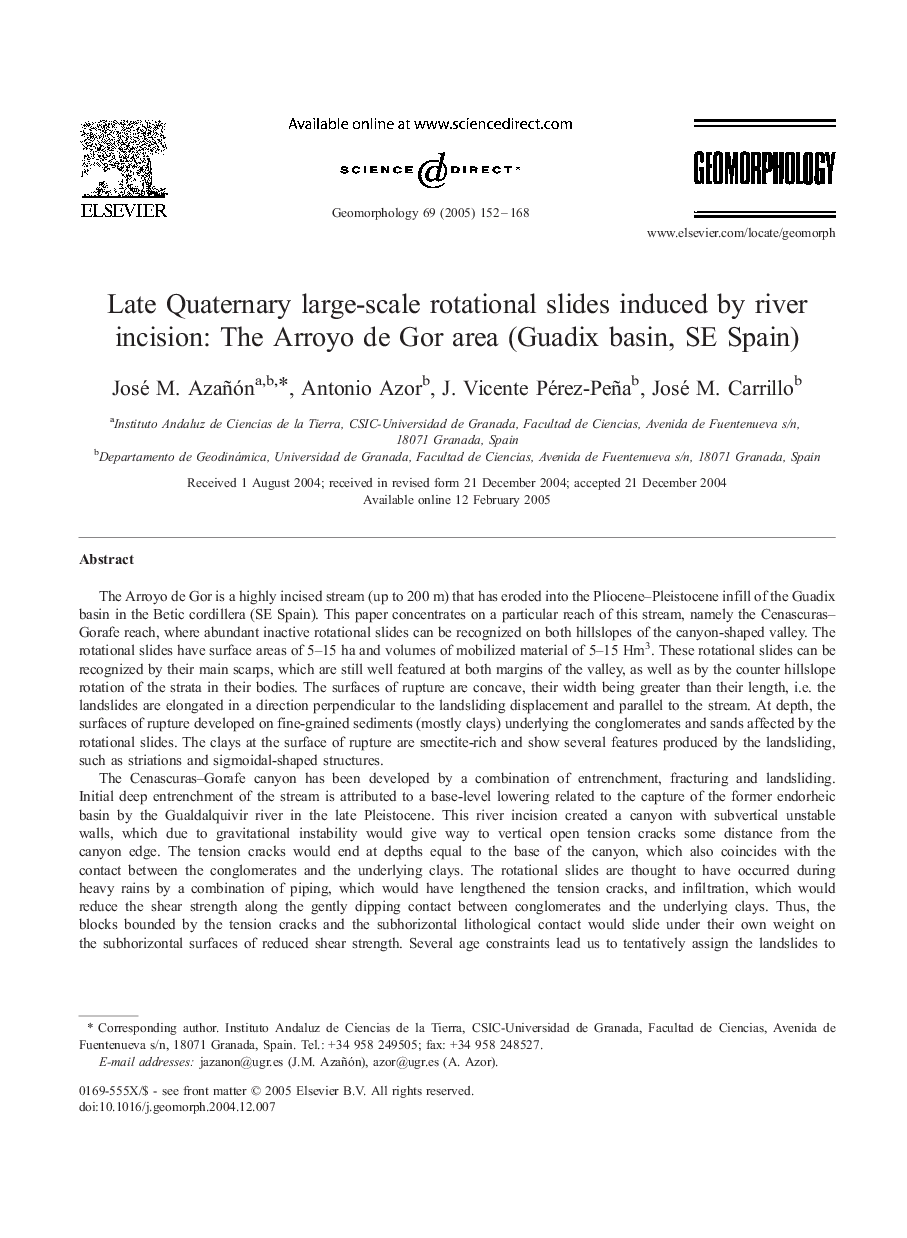| کد مقاله | کد نشریه | سال انتشار | مقاله انگلیسی | نسخه تمام متن |
|---|---|---|---|---|
| 9524906 | 1635611 | 2005 | 17 صفحه PDF | دانلود رایگان |
عنوان انگلیسی مقاله ISI
Late Quaternary large-scale rotational slides induced by river incision: The Arroyo de Gor area (Guadix basin, SE Spain)
دانلود مقاله + سفارش ترجمه
دانلود مقاله ISI انگلیسی
رایگان برای ایرانیان
کلمات کلیدی
موضوعات مرتبط
مهندسی و علوم پایه
علوم زمین و سیارات
فرآیندهای سطح زمین
پیش نمایش صفحه اول مقاله

چکیده انگلیسی
The Cenascuras-Gorafe canyon has been developed by a combination of entrenchment, fracturing and landsliding. Initial deep entrenchment of the stream is attributed to a base-level lowering related to the capture of the former endorheic basin by the Gualdalquivir river in the late Pleistocene. This river incision created a canyon with subvertical unstable walls, which due to gravitational instability would give way to vertical open tension cracks some distance from the canyon edge. The tension cracks would end at depths equal to the base of the canyon, which also coincides with the contact between the conglomerates and the underlying clays. The rotational slides are thought to have occurred during heavy rains by a combination of piping, which would have lengthened the tension cracks, and infiltration, which would reduce the shear strength along the gently dipping contact between conglomerates and the underlying clays. Thus, the blocks bounded by the tension cracks and the subhorizontal lithological contact would slide under their own weight on the subhorizontal surfaces of reduced shear strength. Several age constraints lead us to tentatively assign the landslides to the Isotope stage 5 (around 32 ka), an interglacial period agreed to be wetter and slightly warmer than the present-day semi-arid climate.
ناشر
Database: Elsevier - ScienceDirect (ساینس دایرکت)
Journal: Geomorphology - Volume 69, Issues 1â4, July 2005, Pages 152-168
Journal: Geomorphology - Volume 69, Issues 1â4, July 2005, Pages 152-168
نویسندگان
José M. Azañón, Antonio Azor, J. Vicente Pérez-Peña, José M. Carrillo,